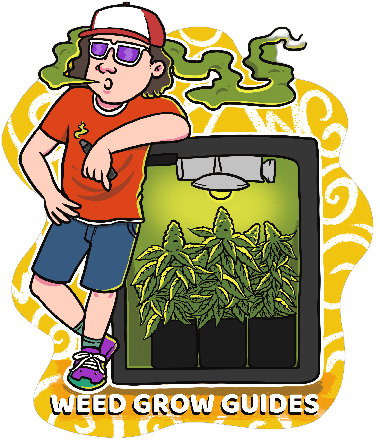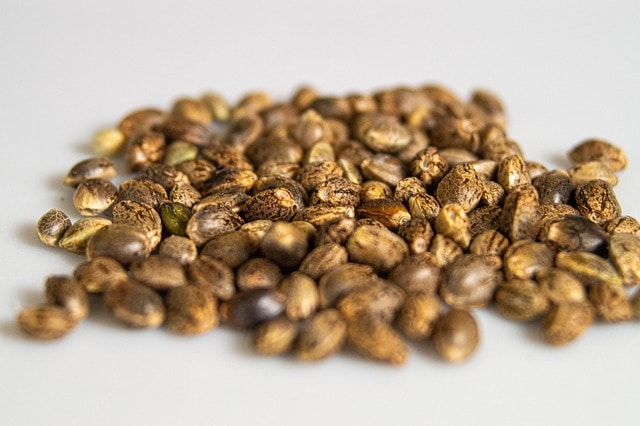Are you interested in growing your own cannabis plants but don’t know where to start? Look no further! In this article, we will guide you through the 15 essential steps to successfully plant cannabis seeds indoors. Whether you’re a seasoned gardener or a beginner, this comprehensive guide will equip you with all the necessary knowledge and tips to ensure a successful cultivation journey. From choosing the right seeds to creating the ideal growing conditions, we’ve got you covered. Get ready to embark on an exciting adventure and watch your cannabis seeds transform into flourishing plants right in the comfort of your own home. Let’s get started!
Choosing the Right Cannabis Seeds
When it comes to growing your own cannabis, choosing the right seeds is crucial. There are numerous varieties to choose from, each offering unique characteristics and effects. Before making a decision, it’s important to research different cannabis seed varieties to find the one that suits your preferences and growing conditions best. Factors to consider include the strain’s THC and CBD content, flowering time, yield potential, and even the flavor and aroma profile of the final product. By doing thorough research, you can ensure a successful and enjoyable growing experience.
Deciding on Regular, Feminized, or Auto-flowering Seeds
Once you’ve narrowed down your options in terms of strain, you’ll need to decide whether to purchase regular, feminized, or auto-flowering seeds. Regular seeds produce a mix of male and female plants, while feminized seeds ensure that only female plants will grow. Auto-flowering seeds, on the other hand, start the flowering process automatically based on their age, rather than relying on changing light cycles. This can be an advantage for growers with limited space or those looking for a quicker harvest. Consider your specific needs and preferences when making this decision, as it will significantly impact your growing experience.
Finding a Reliable Seed Bank
After deciding on the type of seeds you want, it’s essential to find a reliable seed bank to purchase them from. Look for seed banks that have a good reputation and positive customer reviews. A reputable seed bank will offer a wide selection of high-quality seeds, provide discreet and reliable shipping, and have excellent customer service. Take the time to compare different seed banks and ensure that they are in compliance with local laws and regulations. By choosing a trusted seed bank, you can have peace of mind knowing that you’re starting your grow with top-notch genetics.
Setting Up the Germination Area
Once you have your cannabis seeds, the next step is to set up a dedicated germination area. This area will provide the ideal conditions for your seeds to sprout and establish strong root systems before being transferred to their final grow mediums.

Selecting a Germination Container
Choose a germination container that allows for proper drainage and airflow. Many growers opt for small plastic cups or seedling trays with individual compartments. Make sure the containers are clean, sterile, and have drainage holes to prevent water from pooling around the roots.
Preparing the Germination Medium
For successful germination, it’s important to use a light and airy growing medium that retains moisture while allowing oxygen to reach the roots. A popular choice is a mix of seedling-specific soil or coco coir, which provides the right balance of water retention and aeration. Ensure the medium is moist but not too wet before planting the seeds.
Creating Ideal Germination Conditions
To promote successful germination, it’s crucial to provide the right environmental conditions. Aim for a temperature of around 70-80°F (21-27°C), as this range encourages faster and healthier seedling growth. Maintain a humidity level of around 70% to prevent the germinating seeds from drying out. Using a humidity dome or covering the germination container with plastic wrap can help maintain the desired humidity. Place the containers in a warm and undisturbed area but avoid direct sunlight.
Germinating Cannabis Seeds Indoors
With the germination area all set up, it’s time to move on to the actual germination process. There are several methods you can use to germinate your cannabis seeds, each with its own advantages and success rates.
Soaking the Seeds in Water
One common method is soaking the seeds in water. Start by filling a glass with distilled water or a low ppm (parts per million) water source. Drop the seeds into the water and let them soak for approximately 24 hours. After soaking, transfer the seeds to a moist paper towel or directly into the germination medium, as discussed earlier.
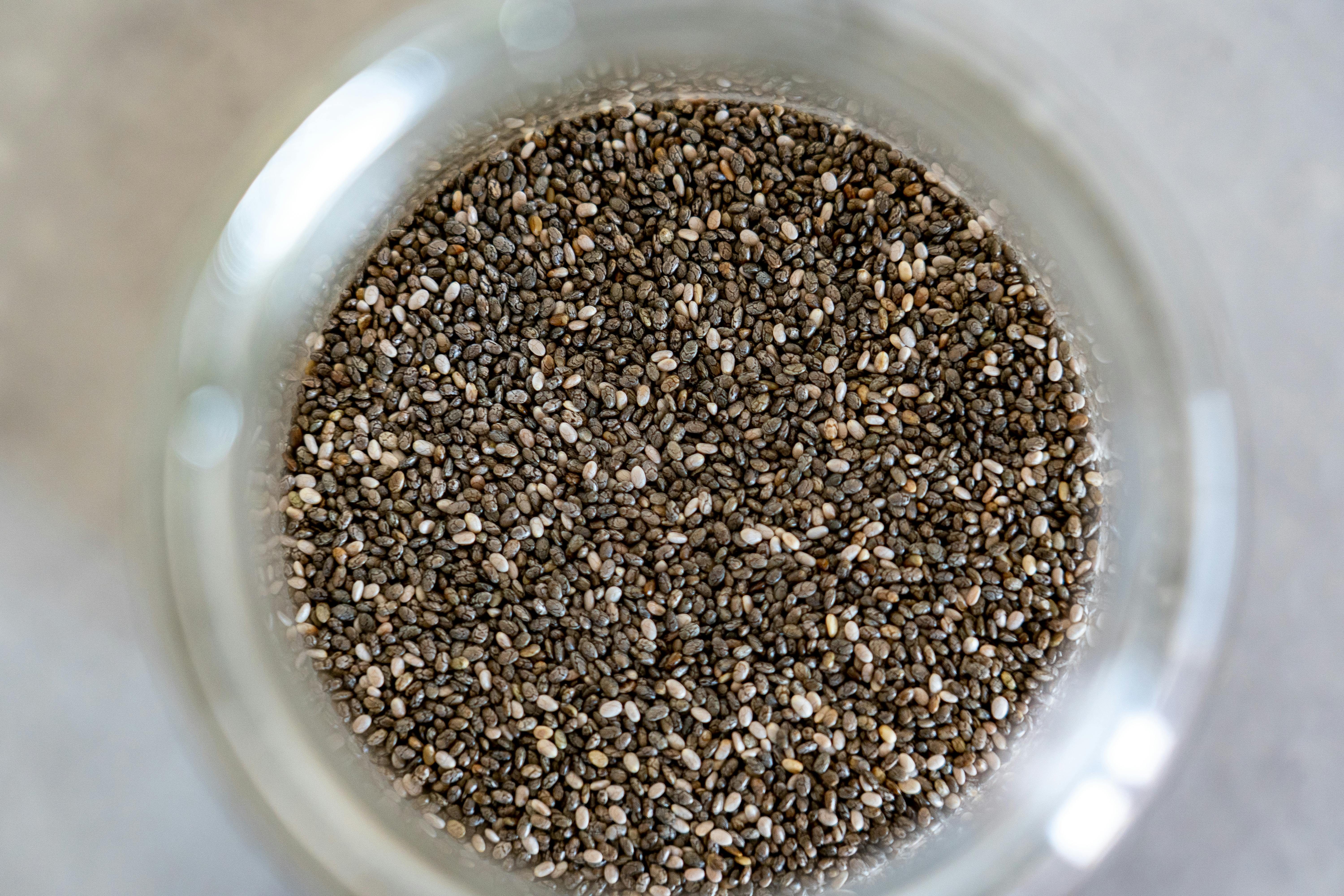
Using the Paper Towel Method
Another popular method is the paper towel method. Take a few moistened paper towels and place the seeds in between the layers. Put the paper towel with the seeds in a sealable plastic bag or container, keeping it in a warm and dark place. Check the seeds daily and wait for them to sprout small white taproots before transferring them to the germination medium.
Using Rockwool Cubes for Germination
Rockwool cubes are also commonly used for germinating cannabis seeds. Soak the cubes in pH-balanced water until fully saturated. Create a small hole in the center of each cube using a pencil or your finger. Gently place the seeds into the holes, ensuring they are covered with a thin layer of Rockwool. Keep the cubes in a propagator or covered tray to maintain the desired temperature and humidity levels.
Transferring Germinated Seeds to Grow Mediums
Once your cannabis seeds have sprouted and developed strong taproots, it’s time to transfer them to their final grow mediums. Whether you choose soil or hydroponics, the goal is to provide the plants with a nutrient-rich environment where they can thrive.
Preparing the Grow Medium
If you choose a soil-based grow medium, make sure it is light, well-draining, and rich in organic matter. Consider adding beneficial amendments such as perlite or vermiculite to improve aeration and drainage. For hydroponics, set up the appropriate system, such as a deep water culture or nutrient film technique, and ensure that all necessary nutrients and pH levels are properly balanced.
Transplanting Seeds to Soil
When transplanting germinated seeds to soil, fill your chosen containers or pots with the prepared soil mix, leaving enough space for the roots to spread. Create a hole in the center of each container, where you will gently place the seedling’s root ball. Carefully cover the roots with soil, ensuring the new transplant is secure.
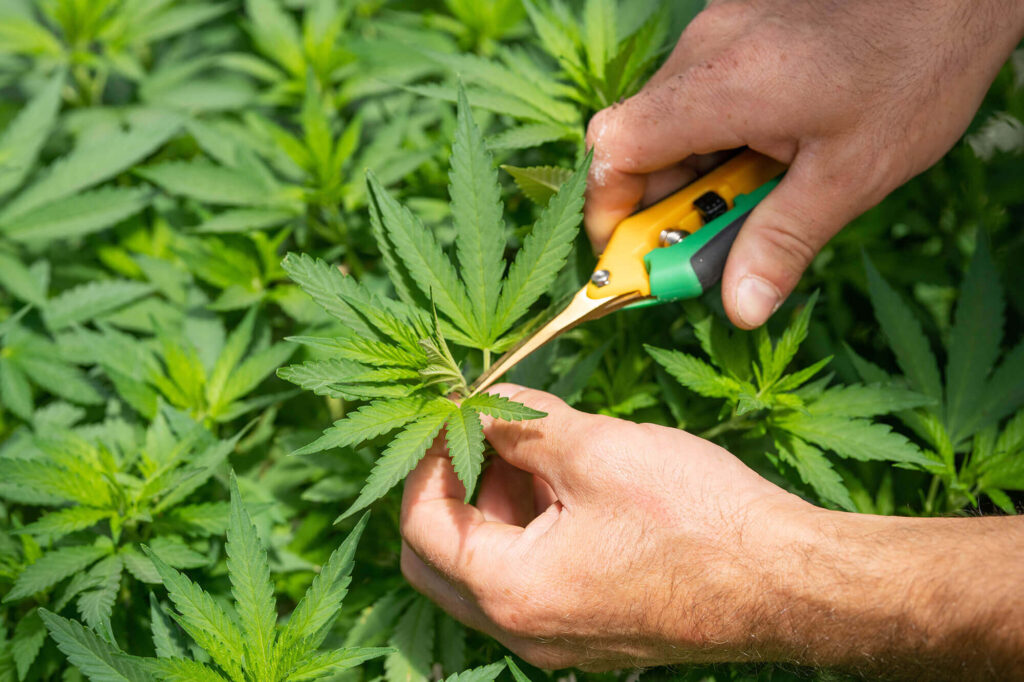
Transplanting Seeds to Hydroponics
For those using hydroponics, carefully remove the germinated seedlings from their paper towel or Rockwool cubes. Place the seedlings into the appropriate hydroponic system, ensuring the roots have access to water and nutrients. Be mindful of not damaging the delicate root system while transferring the seedlings. Don’t ruin your by breaking the tap root. This is important whether your are growing your cannabis seeds indoors or outside.
Providing Optimal Light Conditions
Proper lighting is crucial for the healthy growth and development of cannabis plants. Choosing the right grow lights, setting up light cycles, and maintaining proper light intensity are all key factors to consider.
Choosing the Right Grow Lights
There are several types of grow lights available, including fluorescent, high-intensity discharge (HID), and light-emitting diode (LED) lights. Each has its own advantages and considerations. Fluorescent lights are affordable and suitable for small-scale grows, while HID lights are more powerful and efficient for larger-scale operations. LED lights are becoming increasingly popular due to their energy efficiency and ability to provide specific light spectrums tailored to plant growth. When growing cannabis seeds indoors light selection is very important when it comes to the end yield. Don’t waste months growing under the wrong conditions!
Setting Up Light Cycles
Cannabis plants require both periods of light and darkness to thrive. During the vegetative stage, which typically lasts for 18-24 hours a day, provide consistent light to promote healthy leaf and stem growth. During the flowering stage, reduce the light cycle to 12 hours of light and 12 hours of darkness to encourage bud development. Use a timer to automate the light cycles and ensure consistent and uninterrupted periods of light and darkness.
Maintaining Proper Light Intensity
Finding the right balance between light intensity and distance is crucial for avoiding light burn or stretching of the plants. Different stages of growth require different light intensities. During the seedling stage, keep the light intensity low to prevent stress on the young plants. As the plants grow, gradually increase the light intensity. Monitor the distance between the lights and the plant canopy to ensure optimal light penetration and coverage.
Adjusting Temperature and Humidity
Maintaining the proper temperature and humidity levels is vital for healthy cannabis growth and preventing pest and disease issues. Be mindful of both daytime and nighttime conditions and strive to create a stable and favorable environment for your plants.

Maintaining Optimum Temperature Levels
During the vegetative stage, aim for a temperature range of 70-85°F (21-30°C). Cooler temperatures can promote vibrant coloration and tighter internodal spacing. During the flowering stage, reduce the temperature to around 65-80°F (18-27°C) to encourage resin production and bud development. Regularly monitor the temperature with a thermometer and adjust accordingly, using cooling or heating devices as needed.
Controlling Humidity Levels
In the vegetative stage, maintain a humidity level between 40-70% to promote healthy plant growth and transpiration. Higher humidity levels can lead to mold and mildew issues, while lower levels can cause stress and slower growth. During the flowering stage, gradually reduce the humidity to around 40-50% to prevent bud rot. Use a hygrometer to monitor humidity levels and consider using dehumidifiers or humidifiers to create an optimal environment.
Ventilation and Air Circulation
Proper air circulation is crucial for preventing stagnant air and managing temperature and humidity levels. Use fans to promote air movement within the grow space, ensuring that fresh air is constantly flowing and that any excess heat or humidity is being removed. Consider using oscillating fans to create gentle air movement, reducing the risk of damaging the plants.
Watering and Nutrient Requirements
Providing the right amount of water and nutrients is essential for healthy plant growth and high-quality yields. To have success with your cannabis seeds indoors, understanding proper watering practices and choosing the right nutrients are key components of successful cannabis cultivation.
Establishing Proper Watering Practices
Water your cannabis plants when the top inch of the soil feels dry. Avoid overwatering, as it can lead to root rot and other issues. When watering, aim for thorough saturation while allowing excess water to drain out. Ensure that your containers or pots have proper drainage to prevent water from pooling.
Choosing the Right Nutrients
Cannabis plants require a balanced combination of macronutrients (nitrogen, phosphorus, and potassium) as well as micronutrients (iron, copper, etc.). Use a high-quality cannabis-specific nutrient solution that provides the necessary elements in the correct ratios. Follow the manufacturer’s instructions for proper dosage and application, avoiding overfeeding or underfeeding.
Following a Feeding Schedule
To ensure consistent nutrient availability, establish a feeding schedule based on the specific needs of your cannabis plants. Typically, seedlings and young plants require lower nutrient concentrations, while mature plants require higher levels. Adjust the feeding schedule according to the plant’s stage of growth and monitor the plants for any signs of nutrient deficiencies or excesses. Regularly flush the grow medium to remove any built-up salts and maintain a healthy root zone.
Pruning and Training Techniques
Pruning and training techniques help shape and control the growth of cannabis plants, ultimately maximizing yields and promoting even bud development. Understanding the different techniques and when to apply them is crucial for achieving desired results.
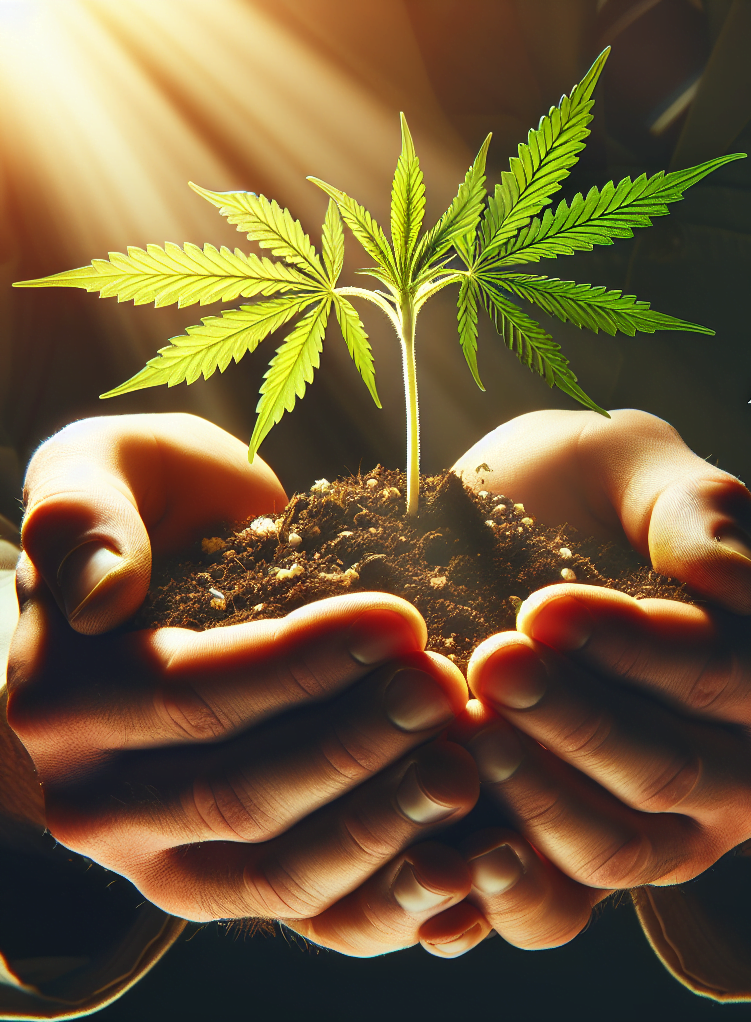
Understanding Pruning and Training
Pruning involves selectively removing certain parts of the plant, such as leaves or branches, to redirect its energy and optimize growth. Training, on the other hand, manipulates the plant’s structure by bending, tying, or securing branches, allowing better light penetration and more even bud development. These techniques can improve airflow, reduce shading, and increase overall bud production.
Topping and FIMming
Topping and FIMming are two commonly used pruning techniques. Topping involves removing the main shoot’s apical bud, encouraging the growth of two new main shoots. FIMming is a similar technique that involves pinching the newest growth at the top of the plant, resulting in the development of multiple new shoots. Both techniques can help create a bushier and more even canopy.
Using Low-Stress Training Techniques
Low-stress training (LST) techniques involve gently bending and securing the branches to create a wider and more open plant structure. This maximizes light penetration to lower branches and promotes more even bud development. Techniques such as LST, mainlining, or scrogging can be employed depending on the specific needs and goals of the grower.
Managing Pests and Diseases
As with any plant, cannabis is susceptible to pests and diseases that can hinder its growth and reduce overall yield. By proactively identifying and addressing these issues, you can ensure the health and vitality of your plants.
Identifying Common Cannabis Pests
Common cannabis pests include spider mites, aphids, thrips, and fungus gnats. Look for signs such as discolored leaves, webs, or small insects on the plants. Regularly inspect your plants, especially the undersides of leaves and the soil surface, to catch any pest infestations early.
Preventing and Treating Pest Infestations
To prevent pest infestations, maintain a clean and sanitary grow area, including regular cleaning and sterilization of tools and equipment. Consider using insecticidal soaps or natural predators to control pests. If an infestation occurs, isolate the affected plants and treat them promptly according to the specific pest control recommendations. Consult with professionals or online resources for appropriate products and application techniques.
Recognizing and Addressing Plant Diseases
Plant diseases can manifest in various forms, such as mold, mildew, or fungal infections. Recognize common symptoms, including spots on leaves, wilting, or unusual growth patterns. To prevent and treat diseases, maintain proper ventilation, reduce humidity, and avoid overwatering. If a disease is present, trim affected areas or apply appropriate fungicides or treatments. Remove and dispose of severely infected plants to prevent the spread of disease.
Harvesting and Maximizing Yield
After weeks of care and cultivation, it’s time to reap the rewards of your efforts. Proper harvesting techniques and implementing advanced growing techniques can help maximize yield and produce high-quality cannabis.
Enhancing Yield through Plant Genetics
Choosing the right genetics from the beginning can significantly impact the final yield. Consider selecting strains known for their high yields and desirable traits. Explore different breeding techniques and genetics to further enhance yield potential.
Practicing Proper Harvest Techniques
Harvesting at the right time is crucial for achieving optimal potency, flavor, and overall quality. Observe the trichomes on the buds, as they change from clear to cloudy or amber. Use a magnifying device to inspect the trichomes and harvest when they reach the desired stage of maturity. Use sharp and sterilized tools to carefully trim the buds, avoiding excessive handling or damaging the delicate trichomes.
Implementing Advanced Growing Techniques
In addition to genetics and proper harvest techniques, advanced growing techniques can further maximize yield. These include techniques such as super cropping, which involves strategically damaging the plant to promote greater bud growth, or using supplemental CO2 to enhance photosynthesis and growth. These techniques require careful consideration and expertise, but when implemented correctly, they can lead to even higher yields and impressive results.
In conclusion, successfully planting cannabis seeds indoors involves careful consideration of several factors. From choosing the right seeds to providing optimal growing conditions, watering and feeding the plants appropriately, and managing pests and diseases, each step plays a crucial role in a successful and bountiful harvest. By following the steps outlined above and continually learning and improving your techniques, you can enjoy the process of growing your own high-quality cannabis.
To learn more about growing marijuana make sure to check our out other grow guides! We are helping new growers for free. Whether it is growing cannabis seeds indoors, selecting the best grow lights, fixing sick plants or something else, make sure to spread the love!
Happy growing!
